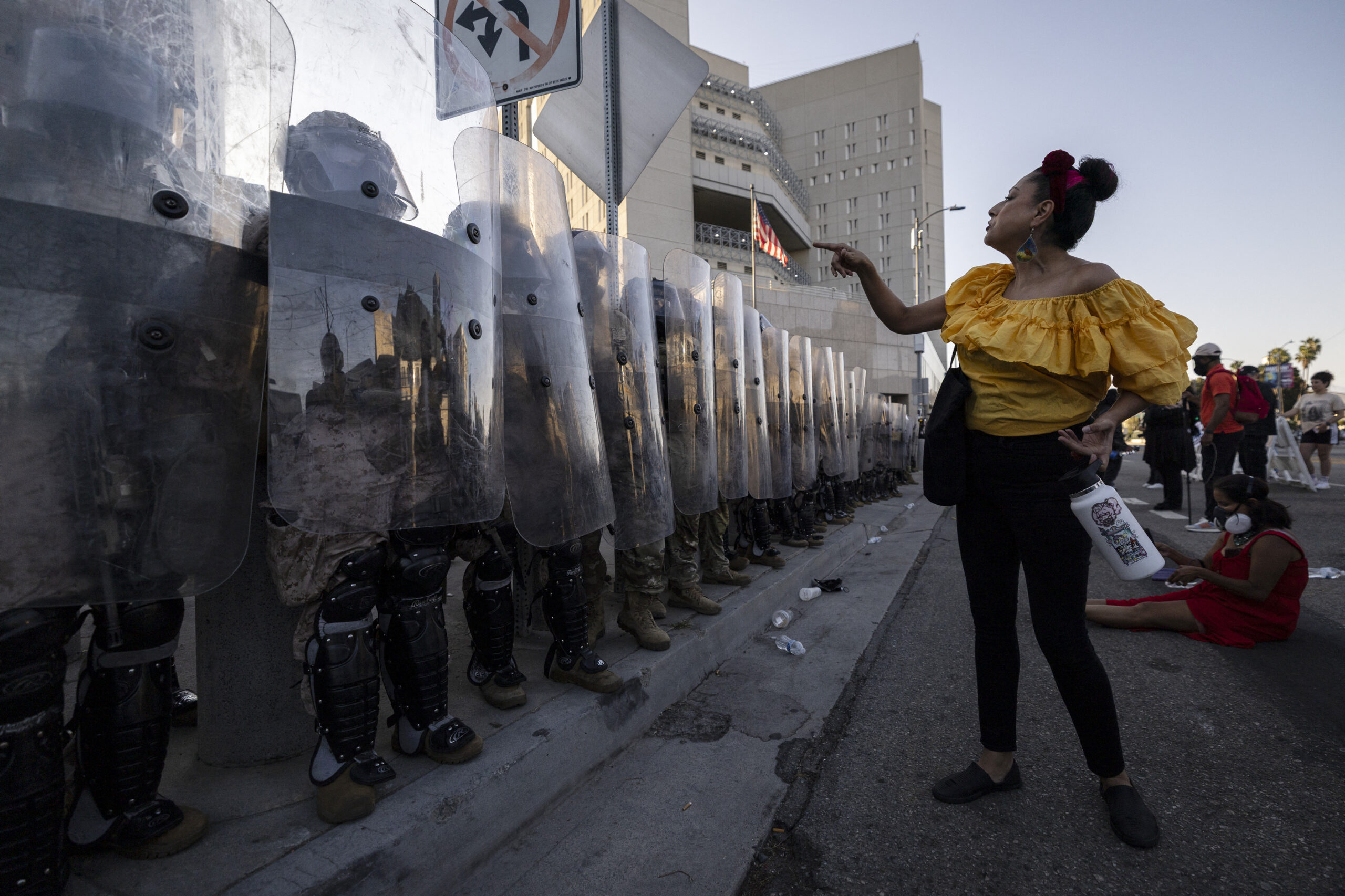In 2013, venture capitalist Tim Draper launched a “Six Californias” ballot initiative. The upshot was that with some 40 million people, more than the population of the 20 smallest states combined, California was too big, too diverse, to be “efficiently” governed. So why not, Draper argued, break it up into six new “startups,” a.k.a. states? Instead of two senators, we erstwhile “Californians” would get 12.
Draper’s scheme was part of a long tradition—since California was admitted to the Union as part of the Compromise of 1850, there have been more than 220 proposals for it to divide or secede—but derided as a Silicon Valley ploy to create a libertarian deregulation zone. (Tellingly, the Bay Area state was to be named “Silicon Valley.”) And aside from the feasibility of making it happen, state and federal constitution-wise, people worried that it would cleave four rich populous states from two poorer rural states (fair) and weaken Democrats’ voting share in the Senate (in retrospect, nah). Draper’s measure gleaned valid signatures from some 753,000 people—more, it must be said, than the populations of America’s three smallest states—but in California, that wasn’t enough to get on the ballot.
After the 2016 election, which put the anti-majoritarian provisions of the US Constitution very much front of mind, Draper came back with a simpler proposal—three Californias, or Cal 3. This initiative got enough signatures to head to voters, but the day before the 2018 ballots were to be printed, the state Supreme Court blocked the measure—what about things like existing water treaties, the justices worried—and Draper eventually gave up.
While his motives were murky, Draper tapped into something now excruciatingly felt. The assignment of two senators per state, no matter its population, was always a deeply flawed (and deeply racist) proposition. But the unfairness has only gotten more acute. As my colleague Ari Berman has noted: “In 1790, the country’s most populous state, Virginia, had 12 times as many people as its least populous, Delaware. Today, California has 67 times the population of Wyoming. Fifteen small states with 41 million people combined now routinely elect 30 GOP senators; California, with 39 million residents, is represented by only two Democrats.” The Golden State is the fourth-largest economy in the world but doesn’t have political clout proportional to its population, let alone to our status as a global cultural, technological, and agricultural juggernaut.
In case it’s not obvious why I’m taking a leisurely drive down a byroad of California electoral history, let’s review some of the abuses and usurpations that President Donald Trump has visited upon us.
California, and the country, cannot await the outcome of the midterms to repel Trump’s siege on democracy. More drastic action is required.
The most vicious of those abuses has been over immigration. On June 6, at the urging of his deputy chief of staff, Stephen Miller, ICE escalated raids in California, hitting farms, factories, construction sites, and schools, separating families and detaining undocumented people, legal residents, and even citizens. Federal agents arrested and hospitalized David Huerta, the head of one of the state’s most powerful unions. When protests erupted, Trump jumped at the chance to federalize the National Guard against Gov. Gavin Newsom’s wishes—something that hasn’t been done since LBJ acted to protect civil rights protesters from segregationists. Border czar Tom Homan threatened to arrest Newsom, which Trump agreed was a “great” idea. When a reporter asked for what crime, Trump responded that his “primary crime is running for governor” and called protesters “insurrectionists.” Speaker of the House Mike Johnson chimed in that Newsom should be “tarred and feathered.” Then Trump sent Marines into LA. When California Sen. Alex Padilla—who was voted for by more Americans than 18 GOP senators combined—tried to ask Department of Homeland Security Secretary Kristi Noem questions at a press conference, federal officials knocked him down and cuffed him. One-quarter of California’s population are immigrants, and the continual attack on them—and anyone who is brown—is a moral injury that plays out in our streets and our feeds day after day after day.

But the direct assaults on California are by no means limited to raids and those protesting raids. Trump has dragged his feet about providing federal aid to address the devastation of LA’s wildfires, saying he’d release it only if we pass a voter-ID law; taken our own National Guard off fire lines; and made bizarre claims about sending us water for the fires from the Pacific Northwest. He’s canceled our car efficiency and emissions rules, attacked our renewable energy plan, and zeroed out federal money for rooftop solar and high-speed rail. He’s revoked federal grants to UCLA over spurious charges of antisemitism, then gave the school a list of demands, including a $1 billion settlement and the end of gender-affirming care in its hospitals.
Amid all of that came Trump’s demand that Texas engage in midcycle redistricting to give the GOP five extra congressional seats that he says it’s “entitled to.” Newsom, both legitimately enraged and sensing an opportunity to help his presidential ambitions, has rallied California Democrats to mount a ballot initiative to temporarily set aside its nonpartisan redistricting commission and draw congressional maps to counterbalance Texas’ scheme.
We will vote on that initiative in November, and my bet is it will pass. But California, and the country, cannot await the outcome of the midterms to repel Trump’s siege on democracy. More drastic action is required.
Unfortunately, especially as Trump berates generals and admirals on “the enemy within” and suggests they use US cities as “training grounds,” it’s all too easy to imagine a world where the commanders of California’s military bases are compelled to choose sides. (If you think such scenarios are out of the realm of possibility, ask yourself why he and Pushup Pete Hegseth have been purging the brass.) Our boundaries of oceans and mountains and deserts, our copious natural resources, and our technological prowess make a return to an independent California Republic more feasible than it might be for other states. But in advance, and hopefully in lieu, of that, it’s time to start applying our economic muscle.
When Trump first said he was gutting federal funding to California’s public universities, a system that is the envy of the world, Newsom responded: “Californians pay the bills for the federal government. We pay over $80 BILLION more in taxes than we get back. Maybe it’s time to cut that off, @realDonaldTrump.”
Remember when Mitt Romney called 47 percent of Americans “takers,” layabouts who fed off the “makers” that he claimed to represent? (We do, since Mother Jones’ own David Corn broke that story, arguably changing the course of the 2012 election.) This persistent GOP talking point is especially odd when you consider the residents of 19 mostly blue states pay more to the US Treasury than they get in federal benefits; to Newsom’s point, none pays more than California. (This includes our undocumented residents, who pay billions in federal taxes and receive no federal benefits.) We’re mostly happy to do it because we believe in things like Social Security, public education, pandemic preparedness, and research institutions. But why should we sit by while you take our money, defund our priorities, and shit on our values?
California can’t claim no power in Congress, like DC—home to 700,000 people, more than either Vermont or Wyoming—can. But it’s time to think outside of the electoral box and start flexing our considerable leverage. We are the nation’s largest agricultural state—growing more than a third of the country’s vegetables and three-quarters of its fruits—and the fifth-largest food producer in the world. We produce the most milk and the most wine, copious amounts of rice and cattle, and, crucially, 90 percent of US avocados. Other states may be poster children for farms, but we’re No. 1. Hollywood is a $47.2 billion industry exerting, for better or worse, immeasurable global cultural power. The $623 billion tech sector is even mightier. Were California to secede, almost 15 percent of America’s GDP would go with it, and the US could slip behind China as the world’s biggest economy.
Short of actual secession, what could California do? It could learn from the Jimmy Kimmel showdown and lead a financial “countervalue” rebellion, using “the full weight of blue states’ market power, cultural influence and legal authority to raise the stakes of Republican red-state aggression,” Democratic strategists Arkadi Gerney and Sarah Knight wrote in the Washington Post, by imposing “regulatory and economic costs that bite hard enough to make the constituents of even the most insulated legislator feel the pain.” We could start by disinvesting our pension funds from red-state companies like AT&T, American Airlines, ExxonMobil, and Tesla. “The 15 blue trifectas (states where Democrats control the governor’s mansion and both houses of the state legislature), with their larger state budgets and more generous pensions, have state investments that total almost 75 percent more than the 23 red trifectas,” they note.
If that seems a reach, consider that Texas effectively got BlackRock to drop its “woke” investment and governance policies by blackballing it. Blue states could lure away techies, doctors, nurses, and electricians with relocation bonuses. We could institute tax and other incentives to pull new factories and data centers away from red states. We could selectively terminate professional licensing reciprocity. We could ease commerce between friendly states and make it difficult for unfriendly ones.
Economic retribution is just part of a broader constellation of tools that law professors Jessica Bulman-Pozen (Columbia) and Heather K. Gerken (Yale) call “uncooperative federalism” and others call “soft secession.” It’s not, writes Substacker Chris Armitage, “the violent rupture of 1861, but something else entirely. Blue states building parallel systems, withholding cooperation, and creating facts on the ground that render federal authority meaningless within their borders.” Some of this is already underway. Led by California’s Rob Bonta, the attorneys general of blue states have been having almost daily Zoom calls to plot strategy and file briefs and suits. Democratic governors have devoted tens of millions to hire lawyers for those fights and banded together to oppose Trump’s threats to send troops to their states. In early September, California, Oregon, and Washington created the West Coast Health Alliance to formulate their own vaccine standards and distribute shots, no matter what lunacy Health and Human Services Secretary Robert F. Kennedy Jr. unleashes. Hawaii signed on a day later. Other blue states are honing similar coalitions.
Unified action could further preserve what the federal government is destroying, law professors Aziz Z. Huq (University of Chicago) and Jon D. Michaels (UCLA) wrote in the Los Angeles Times. Blue states could create “large regional research consortia; re-create public-health and meteorology forecasting centers servicing member states; and finance pandemic planning.” (A proposal to do much of this is underway in Sacramento.) With the Justice Department doing little more than acting as Trump’s goon squad, states could also “mobilize interstate criminal task forces to track and prosecute corruption by politicians, lobbyists and government contractors (who invariably, when violating federal laws, run afoul of myriad state laws, too).” Ditto consumer and environmental investigations—the cost of which could be offset by fines, even as they lay the groundwork for federal prosecutions if America is ever restored to sanity.
But we need to be clear-eyed: Such a restoration may not come in time. So far, this year has been marked by a collective action problem. Media conglomerates, law firms, universities, banks, CEOs—too many powerful institutions and individuals have failed to meet the moment. This is why people all over the country, desperate for pushback against Trump’s autocracy, have embraced Newsom’s redistricting plan, whatever their broader opinions of him. With Trump provocatively sending troops into blue cities, and using recision and the shutdown to claw back congressionally appropriated funds from blue states, it’s time to turn the tables on him. Soft secession, powered by the presidential ambitions of multiple blue-state governors, could, should it come to that, be the proving ground of a new confederacy. Hopefully the threat of CalExit or a new Union will be enough. But that extreme measures might be necessary to ensure that American democracy shall not perish from the Earth is becoming more self-evident with every passing day.














